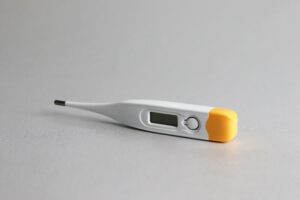What is Impetigo?


Impetigo is a bacterial skin infection that is very common, particularly in young children. It is highly contagious and caused by the bacteria group A Streptococcus and Staphylococcus aureus. Symptoms usually appear about 10 days after exposure and, with treatment, disappear 7 to 10 days later.
The first sign of an impetigo infection is usually red, itchy sores on the face, hands and feet. These sores rupture and ooze clear fluid or pus for a few days before a honey-coloured crust forms in their place. The sores usually heal without scarring.
A more serious form of the condition is ecthyma impetigo, where the sores penetrate more deeply into the skin. These painful, pus-filled sores can give rise to deep ulcers, which may require more extensive medical treatment. Those with a weakened immune system or diabetes are at greater risk of ecthyma sores.
What are the risk factors for impetigo?
- Age. Impetigo is far more common in children than adults. Those aged 2-5 are at most risk of developing it.
- Crowded conditions and close proximity. The infection spreads rapidly in schools, childcare facilities and within households.
- Warm, humid weather. Impetigo is more common in the summer months, than the winter months and is more prevalent in countries with a hot climate.
- Contact sports. Sports such as wrestling and football increase the spread of infection.
- Broken skin. The infection enters the body more easily at sites of skin injury; for example, insect bites, rashes and eczema. To minimise the risk, areas of broken skin should be kept clean.
How is impetigo treated?
A doctor will normally be able to diagnose impetigo simply by looking at the sores. It is easily treated using antibiotics and the sores will no longer be contagious 48 hours after commencing treatment.
Unless there are extensive sores in multiple locations, the treatment of choice will normally be a topical antibiotic ointment or cream that is applied directly to the affected area. In cases where there are multiple sores an oral antibiotic may be prescribed instead.
Are there any long-term consequences?
Impetigo is rarely dangerous and seldom associated with long-term complications. In very rare cases it can increase the risk of cellulitis, which can be dangerous; so any unexpected swelling and redness should be closely monitored and checked by a medical professional.
It is estimated that globally over 162 million children will have impetigo at any one time. The risk of transmission can be minimised by practicing good hygiene and regular cleaning.
Nabta is reshaping women’s healthcare. We support women with their personal health journeys, from everyday wellbeing to the uniquely female experiences of fertility, pregnancy, and menopause.
Get in touch if you have any questions about this article or any aspect of women’s health. We’re here for you.
Sources:
- Bowen, A C, et al. “The Global Epidemiology of Impetigo: A Systematic Review of the Population Prevalence of Impetigo and Pyoderma.” PLoS One, vol. 10, no. 8, 28 Aug. 2015, doi:10.1371/journal.pone.0136789.
- “Impetigo.” Mayo Clinic, Mayo Foundation for Medical Education and Research, 8 Jan. 2019, www.mayoclinic.org/diseases-conditions/impetigo/symptoms-causes/syc-20352352.
- “Impetigo.” NHS Choices, NHS, www.nhs.uk/conditions/impetigo/.
- “Impetigo: All You Need to Know.” Centers for Disease Control and Prevention, Centers for Disease Control and Prevention, 29 May 2020, www.cdc.gov/groupastrep/diseases-public/impetigo.html.










































